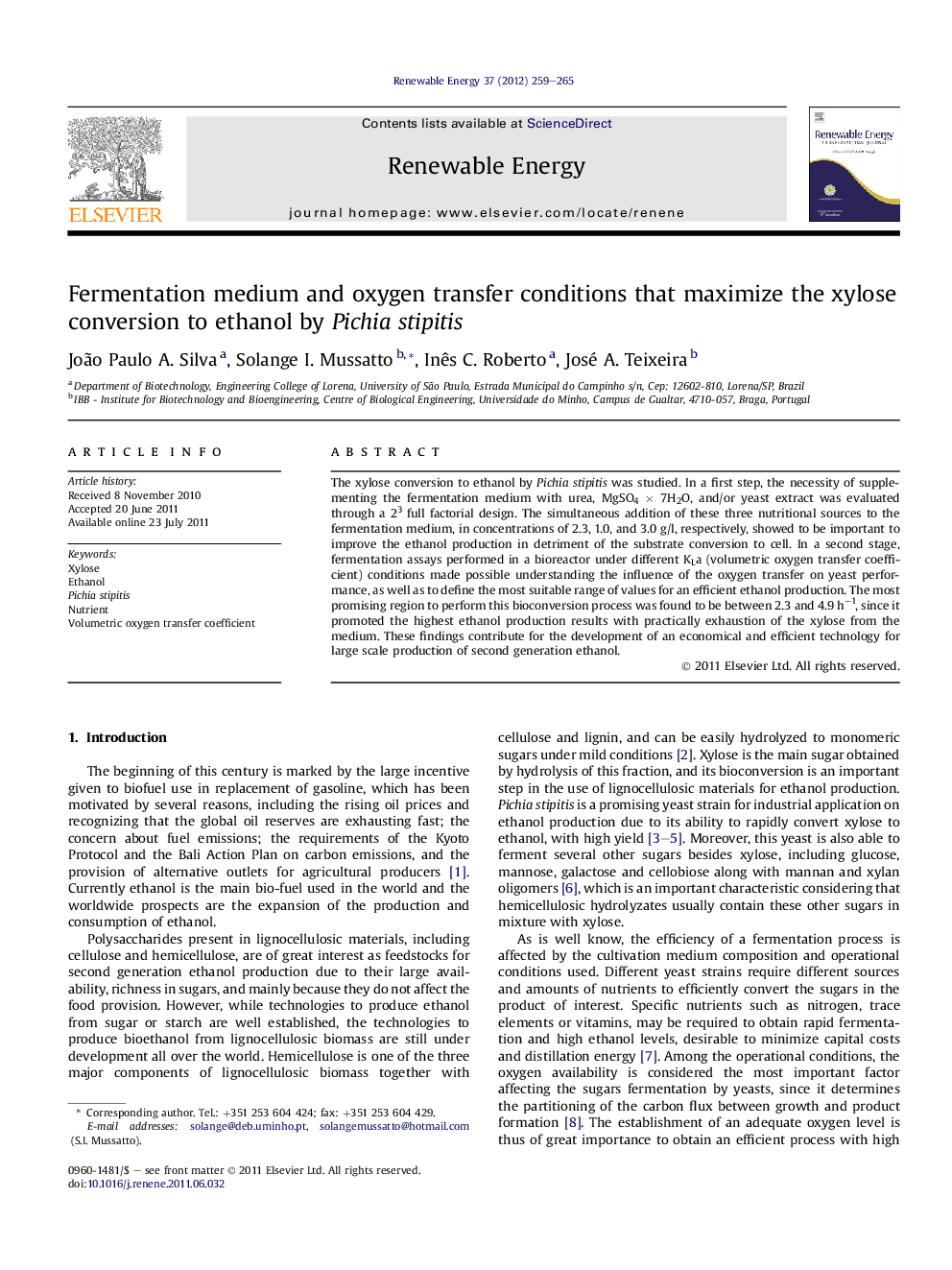| Article ID | Journal | Published Year | Pages | File Type |
|---|---|---|---|---|
| 301397 | Renewable Energy | 2012 | 7 Pages |
The xylose conversion to ethanol by Pichia stipitis was studied. In a first step, the necessity of supplementing the fermentation medium with urea, MgSO4 × 7H2O, and/or yeast extract was evaluated through a 23 full factorial design. The simultaneous addition of these three nutritional sources to the fermentation medium, in concentrations of 2.3, 1.0, and 3.0 g/l, respectively, showed to be important to improve the ethanol production in detriment of the substrate conversion to cell. In a second stage, fermentation assays performed in a bioreactor under different KLa (volumetric oxygen transfer coefficient) conditions made possible understanding the influence of the oxygen transfer on yeast performance, as well as to define the most suitable range of values for an efficient ethanol production. The most promising region to perform this bioconversion process was found to be between 2.3 and 4.9 h−1, since it promoted the highest ethanol production results with practically exhaustion of the xylose from the medium. These findings contribute for the development of an economical and efficient technology for large scale production of second generation ethanol.
► The xylose conversion to ethanol by Pichia stipitis was studied. ► Ethanol production was dependent on the assimilation of nutrients by the yeast. ► Suitable oxygen availability to the medium was essential to improve ethanol production. ► KLa values between 2.3 and 4.9 h−1 were the most suitable for this process.
